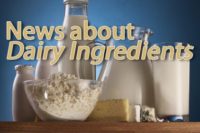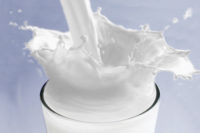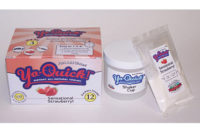Although 72% of Americans are aware of prebiotics’ association with digestive health, according to the International Food Information Council’s 2011 functional foods survey, most would be hard-pressed to describe prebiotics and their functions. That’s understandable. The story of prebiotics and health is not simple. But as scientists learn more, the story becomes more compelling and worth the telling.
Essentially, prebiotics are the preferred food source for probiotics, live organisms that confer health benefits when delivered in adequate amounts. Prebiotics are the nondigestible components in foods such as whole grains, onions and bananas. They can be isolated from plants (as inulin is isolated from chicory root), synthesized from sugars (as fructo-oligosaccharides are synthesized from sucrose) and added to foods.
In order for a food ingredient to be classified as a prebiotic, effectiveness must be proven by demonstrating that it:
• is not broken down in the stomach or absorbed in the GI tract.
• is fermented by the gastrointestinal microflora.
• selectively stimulates the growth and/or activity of intestinal bacteria associated with health and wellbeing.
Prebiotics were thought to be present mainly in plant foods, but recently scientists have discovered prebiotics in whey permeate. Chris Cifelli, the director of nutrition research at the Dairy Research Institute, Rosemont, Ill., predicts that soon it may not be necessary to add plant-derived prebiotics to dairy foods.
“Natural prebiotics are already in dairy,” he said. “Why add more?”
In the colon, prebiotics enable probiotics to do their job by promoting their growth and activity. This is called the “prebiotic effect.” In a research review published in the British Journal of Nutrition (August 2010), the authors state that the prebiotic effect is now a well-established scientific fact and the resulting positive changes in the intestinal microflora, especially an increase in bifidobacteria, can be regarded as a marker of intestinal health.
Prebiotics and the GI tract
Since the GI tract is a major part of the immune system, the prebiotic effect may improve immune system function, reducing risk of gastroenteritis, infections and certain allergy symptoms.
Prebiotics also promote regularity and stool consistency. Preliminary research suggests that the prebiotic effect may also decrease risk of inflammatory bowel disorders and inhibit tumors and cancers. In addition, preliminary research suggests prebiotics may increase calcium absorption and bone mineral density, and regulate satiety and body weight.
The Food and Drug Administration has not approved any health claims for prebiotics or probiotics; however, structure/function claims such as “promotes a healthy digestive system” can be used if such claims are adequately supported by sound science, are truthful and are not misleading.
Currently, prebiotics are added to a variety of foods, including yogurt, cottage cheese, milk and ice cream. Yogurt and cultured milk are best-suited to deliver prebiotics. Since they already contain starter cultures and probiotics, consumers are open to the addition of prebiotics, Cifelli said.
“The prebiotics in dairy and the dairy matrix enhance survival of probiotics in the intestinal tract. Prebiotics and probiotics work together, so delivering them together [as a synbiotic] makes healthier functional foods for consumers.”
Cifelli added that prebiotics can be added to cheese; however, the product isn’t desired by many consumers.
Prebiotics are added to dairy mainly as a fiber and prebiotic source, occasionally as a fat replacer (as in low-fat cheese) and sometimes to chocolate milk as a source of fiber that also provides some sweetness, said David McCoy, vice president of product research at the Dairy Research Institute.
Inulin, a group of plant polysaccharides, is commonly added.
“Inulin is generally a good fit for dairy,” said Carol Lowry, a senior application scientist for health and nutrition with Cargill.
“Inulin acts as a prebiotic and also makes calcium more absorbable — a double bang for your buck,” she said.
When to add prebiotics during processing
During processing, prebiotics are added pre-pasteurization to ensure the prebiotic is rehydrated and the final product is bacteria-free, McCoy explained.
Sarah Staley, a representative from FrieslandCampina Domo, producers of a dairy-derived galacto-oligosaccharide, said that although their product is heat stable, some prebiotics are sensitive to breakdown during heating and under acidic conditions. Therefore, the point that prebiotics are added to dairy foods varies with type of processing, end-product application and type of prebiotic.
Not all prebiotics are equal in their efficacy or usage, Staley noted. It is important to find out if there are robust studies supporting the use of a prebiotic for delivery of health benefits, the efficacious level, impact on sensory characteristics and level of GI tolerance.
But adding prebiotics to dairy may soon be passé. The natural prebiotics in dairy are very complex indigestible sugars that may reduce the risk of metabolic disease, said DRI’s Cifelli.
“The science is evolving. Scientists at University of California-Davis are working to characterize dairy prebiotics and determine which are selective for which probiotics and how they affect health.”
Daniela Barile and the milk bioactive program team at UC-Davis have identified oligosaccharides (OS) in whey permeate that are very similar to the OS in human breast milk, deemed beneficial to infants’ health.
“The advantages of using OS from whey permeate is that they afford more immune protection and [health-promoting] components than plant-based prebiotics, they are already food-grade and just need to be concentrated, and they’re from a byproduct of a byproduct which helps with the environment and sustainability,” said Barile, who estimates it will be more than five years before dairy OS can be isolated and concentrated into powder.
The first clinical trial, funded by the Dairy Research Institute, is in process.
“The pipeline of products will depend on the dairy industry’s desire to invest,” Barile added.
Cifelli believes dairy’s natural prebiotics could enhance the value of dairy in general.
“Dairy plays an important role in overall health,” he said. “Immune cells in the digestive tract are protecting us, so protecting digestive system health [via the prebiotic effect] leads to overall health. Dairy has natural prebiotics and nine essential nutrients.”









